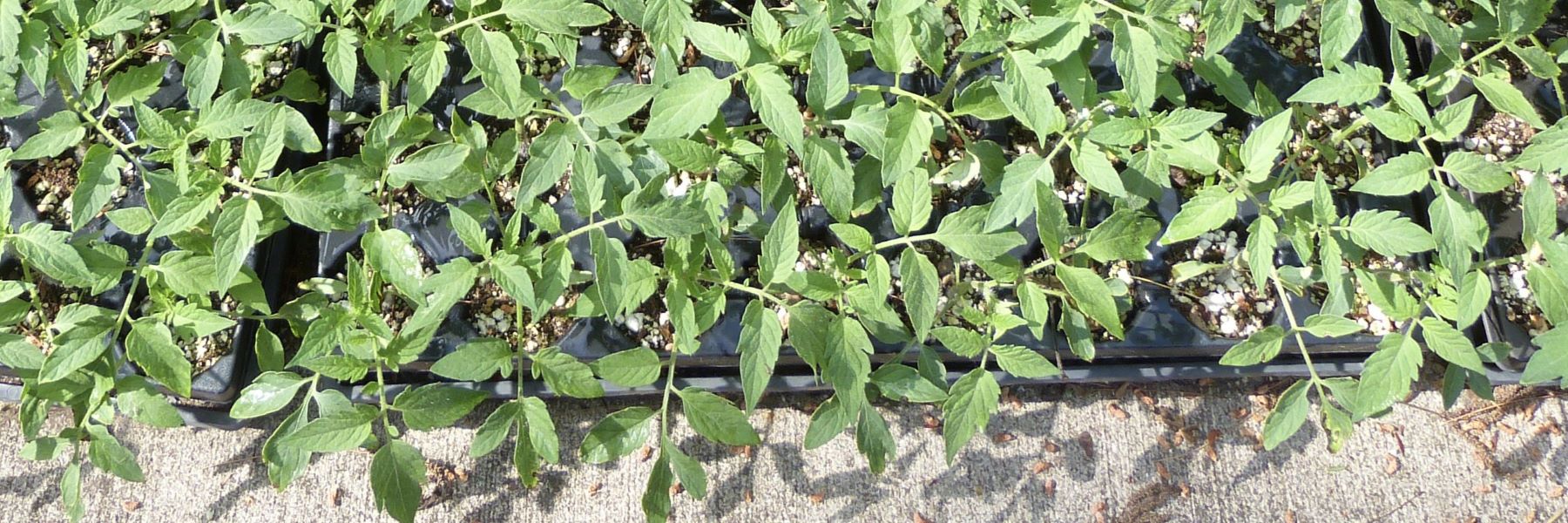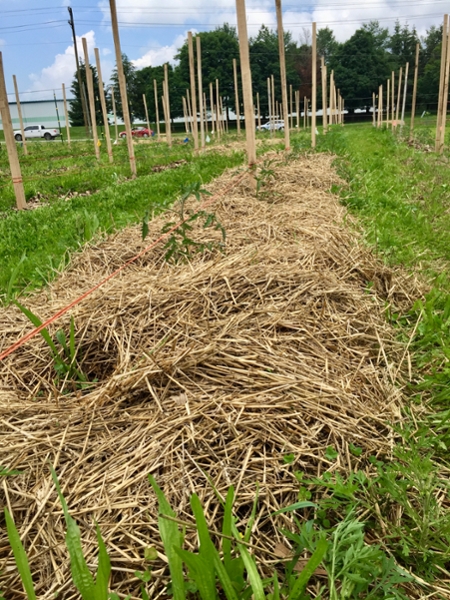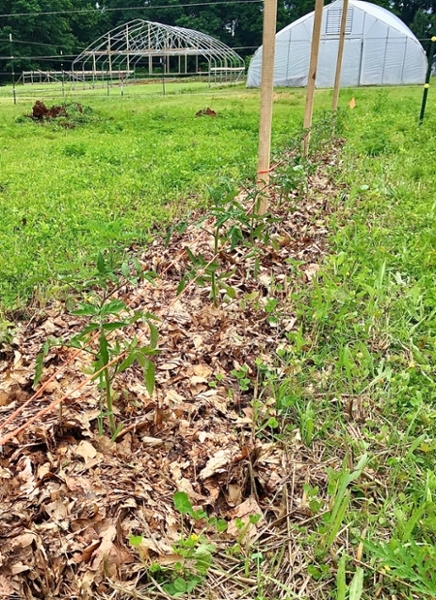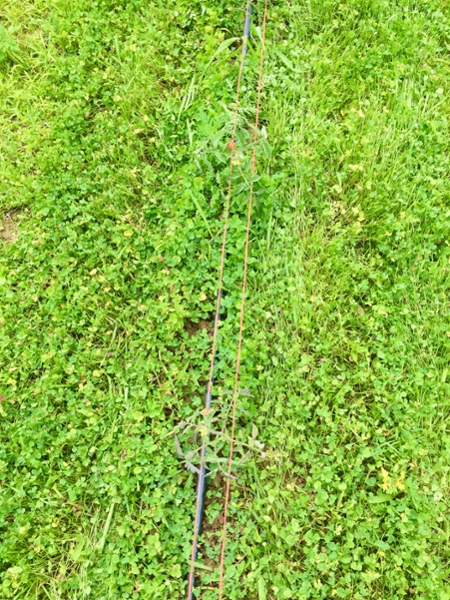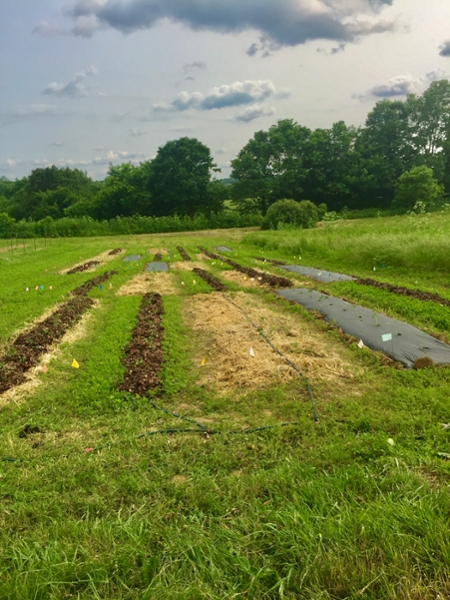Making the Most of Mulch: Strategic Systems for Small Organic Tomato Growers
In 2018, the IU Campus Farm joined a group of researchers and two small, local, organic farms in the Indiana Uplands region to explore the results of different types of mulch application for soil health, weed suppression, and product yield in organic market tomato production. We tested combinations of cover crops (living white clover or residue of winter rye-hairy vetch) and leaf mulch, and compared the results with findings from more common practices like plastic mulch, a fossil-fuel intensive product that generates substantial landfill waste, or straw mulch.
While common mulching practices can be effective and easy options for farmers, plastic mulch helps retain - but does not build - soil nutrients or organic matter, and straw mulch can contain weed seed, promote mold and lead to crop nitrogen deficits. Organic mulches, on the other hand, can suppress weeds while promoting soil health, among other benefits. Mulches created from nitrogen-fixing cover crops, such as the white clover and hairy vetch used in this study, are particularly attractive for nitrogen-demanding crops such as tomato. The goal of this study was to investigate whether leaf mulch (derived from leaves falling from trees in the fall), applied as a strip within the planting row, can help to optimize the practice of using living and residue mulches for small, organic farmers.
Results
We found in our study that the farmers' standard weed suppression methods – black landscaping fabric, black plastic film, or straw – resulted in 30-67% greater net profit compared to the next best mulching treatment. Residue or living mulches combined with in-row leaf mulch strips performed second best, depending on the farm. Hairy vetch-winter rye residue mulch combined with leaf mulch performed second best at Blue Hour Farm. White clover living mulch combined with leaf mulch performed second best at Campus Farm and tended to perform second best at Stranger's Hill Organics (Figure 1).
Some indicators of soil microbial health tended to be higher with alternative mulches. This was most pronounced at Campus Farm and Stranger’s Hill Organics where microbial biomass carbon tended to be highest under the alternative mulches (Figure 2), and where soil nitrogen cycling was highest under white clover living mulch combined with leaf mulch and/or white clover living mulch alone (Figure 3). In addition, indicators of soil carbon storage potential tended to be marginally higher with cover crop mulches compared to plastic or straw mulches, although not statistically so.
See Figures 1-3 by scrolling through the images below:
Conclusions and Future Directions
- We found that in-row leaf mulch strips show promise for mitigating cover crop challenges, but more work is needed to identify cover crop strategies that are effective and economically viable.
-
- Our results also suggest that over time, cover crop mulches may promote greater soil health and carbon storage compared with plastic and straw mulches.
-
- Our results warrant follow-up research to test these cover crop strategies against different weed backgrounds. Cover crop mulches may suppress weeds more effectively once farmers have worked to reduce the overall weed seed bank in the soil. Measuring beneficial insect and bird responses to mulching treatments would add another valuable dimension.
Enjoy this short video about the project.
If you would like to learn more and receive the full report, please contact Dr. Heather Reynolds at hlreynol@iu.edu.
Acknowledgements
Principle Investigators: Dr. Heather Reynolds (IU Biology- hlreynol@iu.edu) and Dr. James Farmer (IU O’Neill- jafarmer@iu.edu)
Research Associate: Adrienne Keller
Farmers: Lea Woodard and Erin Sunshine Carman-Sweeney (IU Campus Farm), Grant Pershing (Blue Hour Farm), Dave Rollo (Stranger's Hill Organics)
Research Assistants: Jenna Baelz, Hanna Bertison, KC Cifizzari, Casey Decaro, Ruby Hopkins, Hongxi Lyu, Ashton Phelps, Caleb Smith, Jake Wood
Funding for this study was provided by USDA SARE Farmer Partnership Grant Program.


